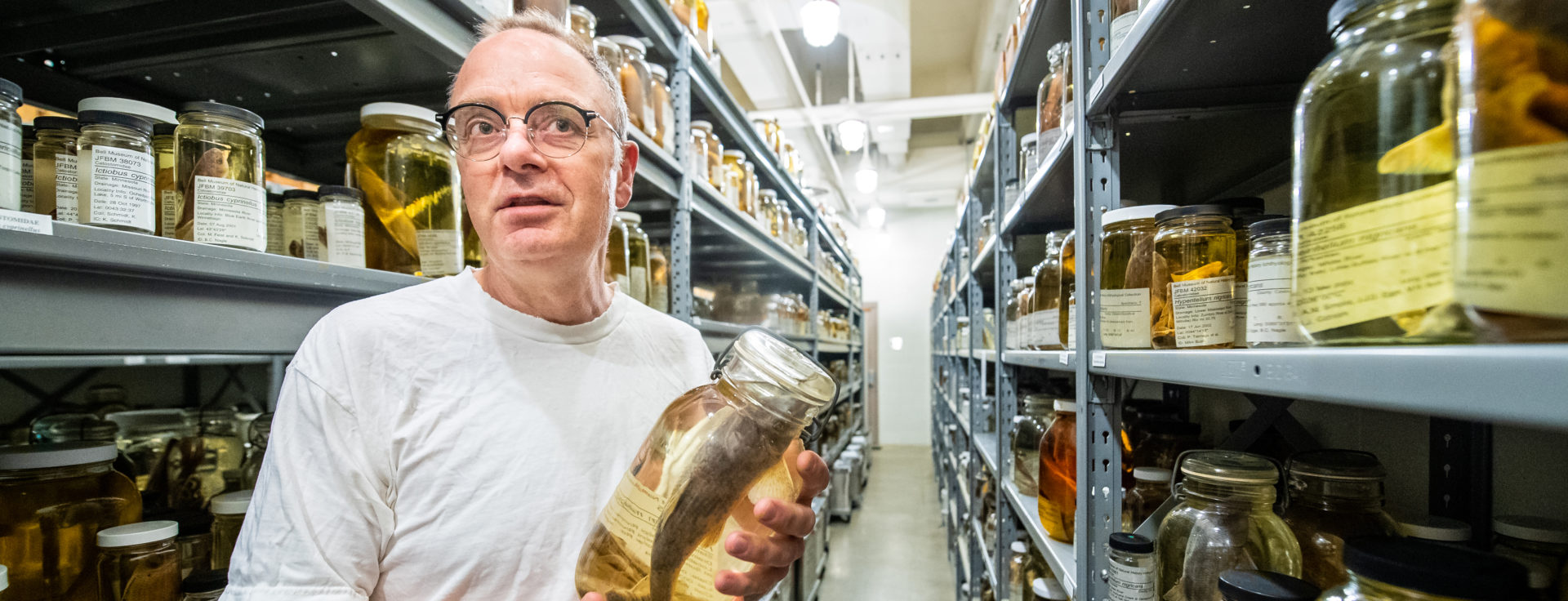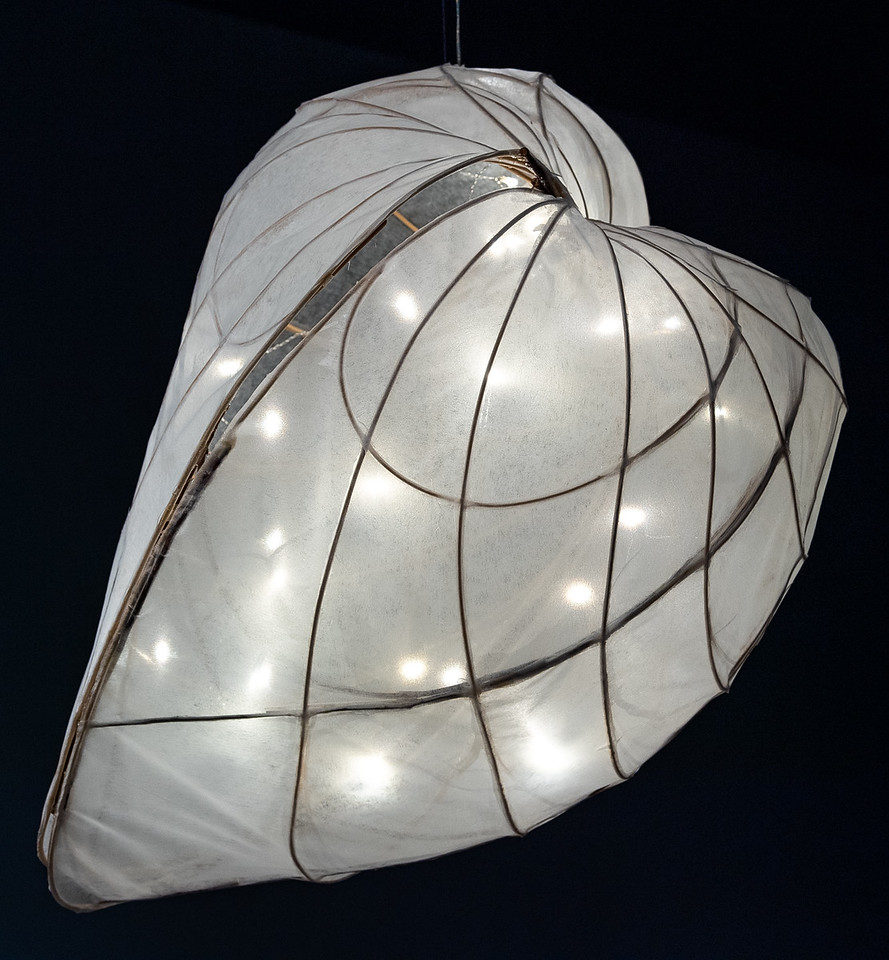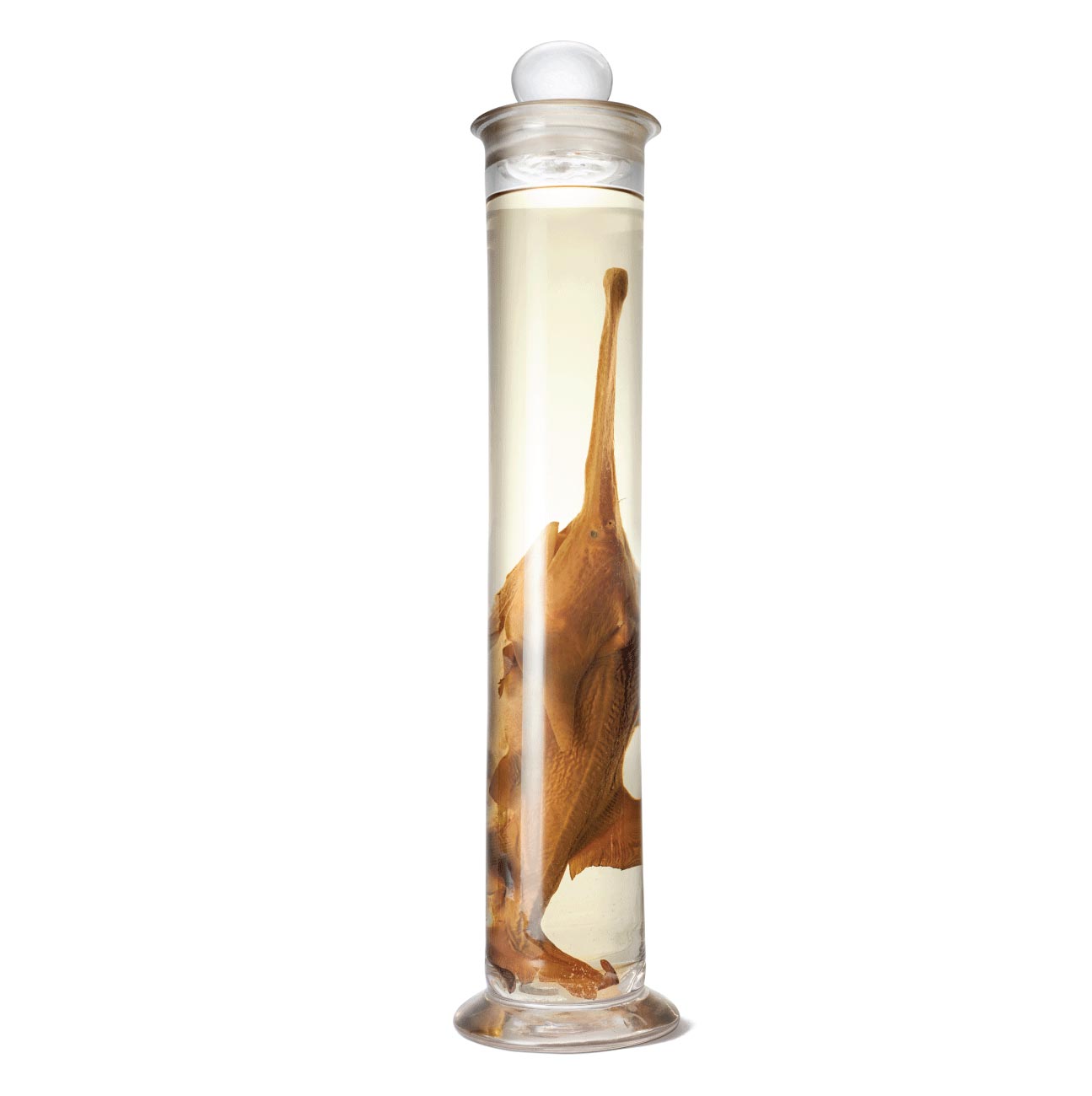
Reeling in the Centuries
Get to know Andrew Simons, curator of the Bell’s fishes collection.
Published05/11/2020 , by Eve Daniels
There are around 1.4 million licensed anglers in Minnesota, and they are surrounded by some 4,500 good fishing lakes. Whether you’re one of those 1.4 million, or you simply have a fascination with fishes, you can take some local pride in the fishes collection at the Bell Museum.
The collection dates back to the late 19th century, with more than 41,000 cataloged lots—one or more individuals of a species, collected at a particular place and time. Most specimens are from Minnesota, but the collection has representative species from across the United States and around the world. Each offers an important record of fish distribution and biology over time.
“You can think of natural history collections like libraries, but instead of books you have specimens,” says Andrew Simons, the Bell’s fish collection curator. “Unlike most books, where if you lose a copy of the book you can print a new one, each specimen contains unique information. Like a library, we lend specimens to scientists at other institutions for their research.”
Scientists can study the specimens to learn about what fishes were eating in the past, the habitats they lived in, and their relationships among each other and other organisms, including invasive species. They can also use samples to document pollutants in the environment.
As the curator of fishes for the past 20 years, Simons works to safeguard the collection for research. A professor in the Department of Fisheries, Wildlife, and Conservation Biology, he adds to the collection from his own research, too. When he joined the University of Minnesota in 1998, he was interested in the biogeography of North American freshwater fishes, particularly from the Highlands Region in the southeastern U.S. and the Appalachian Highlands. Since then, his focus has shifted to the evolution of feeding structures in marine fishes.
A native of Vancouver, British Columbia, Simons took up scuba diving in high school, giving him an up-close appreciation of marine life. He went on to study fish as an undergraduate, graduate student, and postdoc. His research has taken him across North America and to Guam, Japan, and Nepal.

Today, the collection reflects Simons’ interests and those who came before him. Samples from the Midwest, Atlantic coast, Pacific Northwest, Indo-Pacific, Gulf of Mexico, and more are preserved in alcohol, in thousands of jars, in a basement on the St. Paul campus.
Along with Midwest fishes, a significant part of the collection is Blennies, herrings, shads, and anchovies from around the world, collected for recent research projects. Simons and his graduate students will build on these strengths in the coming years. “Our goal is to continue to develop the collection, because if it stops growing, it dies and loses relevance,” he says.
The earliest fish were collected in 1890, when Louis F. Menage, a Minneapolis real estate tycoon, sponsored a scientific expedition to the Philippines. The Bell collection includes more than 30 fish specimens from that trip.
When Simons’ predecessors started the collection, they focused mainly on fish anatomy. “As time has passed, we can do chemical analyses and micro-CT scans, we can collect genetic data, and other interesting things,” says Simons. “I have no idea how people in the future will use the fishes that I’ve collected, but I’m sure they’ll use them in ways that are mind boggling.”
Nature’s Water Filter
Simons has also served as interim curator of the Bell’s mollusks and crustaceans collection for 10 years. This collection includes about 18,000 lots of specimens dating back to 1875.
The majority of these are freshwater mussels collected in Minnesota. “Mussels are hugely important ecologically, since they serve as biological water filters,” notes Simons. They used to be prevalent in streams, rivers, and lakes across North America, but due to changes in water quality and damming on rivers, many are disappearing.
Mussels’ life history depends on fishes, says Simons, “so there’s an interesting co-evolution between freshwater mussels and freshwater fishes.”
The Bell collection is mostly comprised of dried shells, in floor-to-ceiling cabinets, along with some softer parts preserved in jars. There’s also a number of freshwater crayfish, as well as freshwater snails from the Southwestern U.S., which researchers have used to identify new species.
While Simons’ research focuses mainly on fish, his graduate students are actively contributing to the mollusks collection. One student, Sean Keogh, is in the process of describing a new species of freshwater mussel as part of his thesis.




